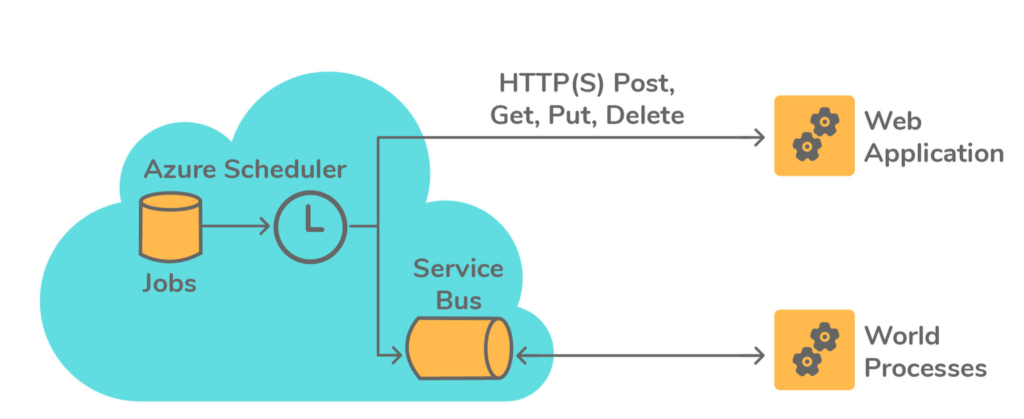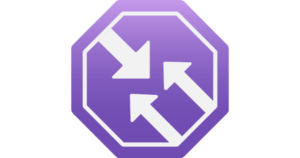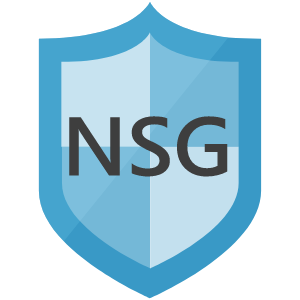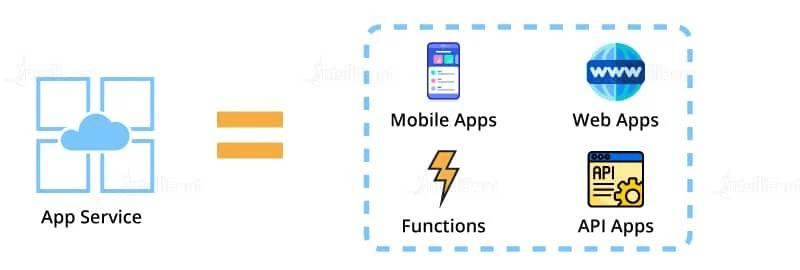Do you know that Azure Microsoft is mentioned as the second-highest profession in demand today after Garner? Microsoft Azure is the most popular service provider, with a market share of 20.3 percent, making it an ideal place to work. We’ve compiled 60+ most often asked Microsoft Azure interview questions and answers in the job for various job profiles for freshers and professionals.
The topics covered in this blog are:
Top 60+ Azure Interview Questions and Answers
You may be asked certain basic to experienced questions, regardless of your experience level in your interview. So, to cope with the competition, learn more about the different types and patterns of interview questions and how to progress along the Azure learning path.
These Azure interview questions can help you advance in your profession, whether you want to be an Azure Developer, Azure Architect, or Azure Administrator. Be ready to stand out from the crowd by preparing for that interview. And to help you ace your interview in one go we have compiled some of the most asked 60+ Microsoft Azure interview questions.
We have divided the Microsoft Azure Interview questions and answers into the following for your ease: Beginner, Intermediate, and experienced
Microsoft Azure Interview Questions for Beginners
1. What are the various Cloud Deployment Models?
The three cloud deployment models are as follows:
Public Cloud: Cloud provider owns the infrastructure, and the server someone’s utilizing could be a multi-tenant system.
Private Cloud: You control the infrastructure, or your cloud provider provides you with that service solely. For instance, one might host their website on their own servers or with a cloud provider on a dedicated server.
Hybrid Cloud: It refers to the usage of both public and private clouds at the same time. For instance, use your in-house servers for secret data and the public cloud to host your company’s public-facing website. It is a hybrid cloud configuration.

2. What do you mean by Azure Virtual Machine Scale Sets?
- These are Azure computation resources for deploying and managing sets of identical Virtual Machines (VMs).
- These scale sets are set up in the same way and are intended to facilitate application autoscaling without the requirement for VM pre-provisioning.
- They make it easy to build large-scale apps that target big data and containerized workloads.

3. What is Azure Data Factory?
Azure Data Factory is a cloud-based, serverless data integration solution and platform for building ETL and ELT pipelines. It aids in the creation of data-driven workflows for the planning and execution of large-scale data movement and transformation. You can easily encounter a question on the data factory in Microsoft Azure interview questions and answers.

4. Define Azure Scheduler.
Azure Scheduler allows us to gather background trigger events or operations such as calling HTTP/S endpoints or presenting a message on the queue.
The jobs in the cloud using this Azure Scheduler to call services both inside and outside of Azure to execute jobs on-demand that are normally run on a regular schedule or start jobs at a future stated date.

5. What do you understand about Azure Traffic Manager?
Azure Traffic Manager is a traffic load balancer that allows users to achieve high availability and responsiveness by distributing traffic across worldwide Azure regions in the most efficient way possible.
- It has a number of automated failover options.
- It facilitates the reduction of application downtime.
- It allows users’ traffic to be distributed over different locations.
- It allows users to see from where their consumers are connecting.

6. What are the Azure Cloud Service’s primary functions?
The Azure Cloud Service has the following primary functions:
- Its purpose is to host a running application while also managing a background running program.
- Web processing is referred to as “web role,” whereas background processing is referred to as “worker role.”
7. What are Azure Resources?
An Azure resource is any entity handled by Azure. Some Azure resources are as follows: Virtual networks, virtual machines, storage accounts, and so on.
8. What are the benefits of Scalability in Azure?
Autoscaling is a feature that allows Azure to scale. Autoscaling lets Cloud Services, Mobile Services, Virtual Machines, and Websites cope with fluctuating demand. These are some of the benefits of the same.
- Enhances the application’s performance.
- Scale up or down in response to the need.
- Scaling to certain time periods should be planned.
- Exceptionally cost-effective
9. What exactly do you mean when you say “Roles”?
Roles are known as nothing servers, which are responsible for maintaining and balancing the platform as a service machine that collaborates to achieve the aim of cloud management.
10. What is Azure Resource Manager?
Azure Resource Manager is a service that allows users to manage and deploy applications in Azure.
It is a management layer that permits developers to create, change, and delete resources in an Azure subscription account. When we have requirements like managing access restrictions and locks, guaranteeing the security of resources post-deployment, and organizing such resources, this capability comes in handy.
11. What are the distinctions between these three, IaaS, PaaS, and SaaS?
Infrastructure as a Service (IaaS)
It provides infrastructure-level features such as operating systems and network connectivity. It works on a pay-per-use basis. Applications are hosted on it. This type of architecture includes Azure VMs and VNETs.
Platform as a Service (PaaS)
It mainly consists of underlying infrastructure abstraction, which enables faster application development without the headache of hosting administration. PaaS includes Azure web apps, cloud services, storage services, and much more.
Software as a Service (SaaS)
These apps are delivered via a service delivery model, in which an organization just uses the applications. SaaS is dependent on subscriptions or advertisements. Gmail, Office 365, SharePoint Online, and other SaaS applications are examples.
It is one of the most asked Microsoft Azure interview questions and answers. Recruiters can put up separately.
12. What is Federation in Azure SQL?
SQL Azure Federation is a set of tools that allow developers to access and share databases in SQL Azure.
- It allows users to take advantage of cloud-based resources.
- Users can create their own databases or exchange databases with one another.
- It lowers the chances of a single point of failure.
- It saves money by only using cloud resources when they’re needed.
13. What are Azure Network Security Groups (NSG)?
Network Security Group (Azure NSG) is a set of ACL (Access Control List) rules that allow or deny network communication to subnets, NICs (Network Interface Cards) linked to a subnet or both. When NSG is attached to a subnet, all Virtual Machines in that subnet are subject to the ACL rules.

Individual NIC traffic restrictions can achieve by directly associating NSG with that NIC. Recruiters are known to ask these Microsoft Azure interview questions and answers while evaluating candidates.
14. What is CSPACK in Azure?
CSPack is a command-line utility that creates a service package file and prepares an application for Azure or Compute Emulator deployment. The cloud service configuration file,.cscfg, is included in every cloud service type project created using CSPack. It keeps:
- The number of role instances for every role deployment
- The certificate thumbprints
- User-defined configurations
Microsoft Azure Interview Questions for Intermediates
15. What do you mean by Fault Domains?
A fault domain is like a rack in an on-premise data center. It is a logical group of the underlying hardware that shares a common power source and network switch. The Microsoft Azure platform spreads your VMs among various fault domains as you create them inside an availability set. This technique reduces the effect of physical hardware failures, network outages, and power outages.
16. What is Redis Cache in Azure?
Azure delivers and maintains an open-source in-memory Redis cache technology. It aids the efficiency of web applications by getting data from the backend database and saving it in the Redis cache during the first request and then collecting all the data from the Redis cache for all following requests. Azure Redis Cache delivers strong and secure caching technologies using the Azure cloud.

17. What exactly is a break-fix problem?
Break-fix issues relate to “effort associated in supporting a technology when it fails in the normal course of its function, requiring intervention by a support organization to be restored to functioning order.”
18. What are the various storage options provided by Azure?
During Microsoft Azure Interview questions and answers, recruiters can put up queries about storage. Azure offers four alternative storage options. They are:
Blob Storage in Azure
Blob Storage allows users to store unstructured material such as photos, audio, and video files, as well as their metadata.
- When an object is modified, it is checked to see if it is the latest version.
- It offers the best flexibility to meet the user’s storage requirements.
- Customers can access unstructured data using REST-based object storage.
Check Out: Our Detailed blog post on Azure Blob Storage
Table Storage in Azure
Users can utilize Table Storage to deliver semi-structured datasets using a NoSQL key-value store.
- It’s utilized in creating applications that require a flexible data format.
- It adheres to a strict consistency model, focused on businesses.
File Storage in Azure
File Storage allows users to share files via the SMB (Server Message Block) protocol.
- SMB 3.0 and HTTPS provide data security.
- Azure handles the deployment of hardware and operating systems.
- It boosts on-premises performance and functionality.
Storage for Azure Queues
Queue storage provides Message queueing for high workloads.
- It allows users to create flexible applications with distinct functions.
- It ensures that the application is scalable, and those individual components are less likely to fail.
- It permits queue monitoring. It ensures that consumer expectations are met.
19. What is the Windows Azure Portal?
You can see a query on the window portal.
A designer logs in with a Windows Live ID to the Windows Azure Portal through their web program to run an application. At this point, the user must decide whether to create a host account for running programs, a storage account for storing data, or both.
Once the designer has a host account, they can submit applications to Windows Azure using the Windows Azure Portal.
20. What exactly is Azure Active Directory?
Microsoft’s Azure AD is a cloud-based IAM solution and directory. Application access management, core directory services, and identity protection are all combined into a single solution. It assists employees in logging in and accessing resources such as:
Microsoft 365, the Azure portal, and a large variety of SaaS applications are examples of external resources.
Internal resources, such as corporate network and intranet apps, as well as any cloud-based apps developed by that company
It is intended for usage by Azure, Office 365, Microsoft 365, or Dynamics CRM Online subscribers IT admins, and App developers.
21. What does the DeadLetter Queue Imply?
In the following scenario, messages are transferred to the DeadLetter queue:
- When the delivery count for a queued message exceeds
- When a message’s expiration date has passed, the complete queue of expired messages is kept.
- When the subscription is enabled with the dead letter filter, an evaluation exception is set by default.
22. Define Azure Databricks.
It is a Data Analytics platform with two development environments for data-intensive applications:
- Databricks in Azure SQL Analytical Services
- Workspace for Azure Databricks
The integration of Azure Databricks with cloud providers’ native security, compute, analytics, storage, and AI services make it easier to unify data and AI workloads.

23. What is Conditional Access in Azure?
Azure AD employs Conditional Access as a tool for making judgments, combining signals, and enforcing corporate norms.
Conditional Access policies allow you to install the appropriate access controls whenever they are needed to keep the organization secure while staying out of the way of the users.
24. When should you use a Static IP address in Azure?
Recruiters can also put up questions based on scenarios in Microsoft Azure Interview questions and answers. When the address connected to the device is not to be updated, a static IP address is used in Azure.
25. What is Windows Azure Traffic Manager?
It allows customers to manage how user traffic is distributed across installed Azure cloud services. Azure offers three different load-balancing algorithms. The traffic manager uses a routing strategy for the Domain Name Service (DNS) queries on your domain names. It maps the DNS routes to the correct instances of your applications.
26. What do you mean by Azure Data Lake?
Azure Data Lake is a cloud platform that facilitates Big Data Analytics by providing unlimited storage for all types and volumes of structured, semi-structured, and unstructured data.
27. What is the difference between a library and a list?
A library is a graphical user interface for managing and storing documents written in Word, Excel, or PowerPoint.
On the other hand, a list is the tabular representation of an item (with columns and rows). It is possible to attach it to documents.
28. How many Azure Services are there?
Azure features more than 6,000 flexible offerings and makes use of Microsoft’s data capacity for Software, Platform, and Infrastructure as a Service (SaaS, PaaS, and IaaS).
29. What is the process of Azure Site Recovery?
Site Recovery orchestrates and automates the replication of Azure virtual machines across several sites, including on-premises computers to a backup data center and on-premises VMs and physical servers to Azure.
It helps with business continuity and disaster recovery (BCDR) by allowing users to access apps from a backup location in the event of a primary site outage.
30. In Azure, how many different backup types are there?
There are three replications included in Azure Backup to keep both storage and data highly accessible.
- GRS (geo-redundant storage) is the default and recommended method for replicating data to a secondary location that is far away from the main.
- LRS (locally redundant storage) creates three copies of data in a data center’s storage scale unit.
- Zone-redundant storage (ZRS) has no downtime and replicates data in availability zones with data residency and resiliency in the same region.
When you are preparing for Microsoft Azure Interview questions and answers, make sure to learn about the full forms of abbreviations.
31. Define Azure DevOps.
It is a software-as-a-service platform that permits you to make work plans, collaborate on code, develop apps, and deploy them. It provides a complete DevOps toolchain for software development and deployment. It can integrate with a variety of popular technologies on the market and is an excellent method to get started with a DevOps toolchain.

Microsoft Azure Interview Questions for Experienced
32. What is the difference between a Repository and a Powerhouse Server?
The repository server is in charge of the database repository’s integrity, consistency, and uniformity, whereas the powerhouse server is in charge of the database repository’s integration.
33. What does Enterprise Warehousing Imply?
It is a phenomenon in which data is created by an organization with access to it from a single location globally. By using periodic handling, warehousing allows the server to link to a single location.
34. What exactly do you mean when you say “Lookup Transformation”?
The source qualifier can be determined using lookup transformation. Lookup transformation might be active or passive. The process is yielding in terms of gaining access to user data or information.
35. What do the Connected Lookups Imply?
The input for an unconnected lookup is taken directly from the transformation that occurs along with the data flow. The linked data lookup is implemented as a static and dynamic cache. It can be orientated using several ports to provide output. A user-defined entity defines it.
36. What do the Unconnected Lookups Imply?
The LKP procedure takes the input in unconnected lookups, as the solution to this Microsoft Azure interview question should be. With only one output port, nature is dynamic. In unconnected lookups, user-defined values are ignored.
37. What does the Command Task Imply?
While the system is still functioning, a command task is an operational window that starts the flow of one or more command shells.
38. What do you understand about SQL Azure Database?
SQL Azure database is merely a method of connecting to cloud services and storing your database in the cloud. Microsoft Azure is the best option for PaaS because it allows you to have several databases on the same account.
In the core, Microsoft SQL Azure is similar to SQL Server in terms of accessibility, versatility, and security.
The Microsoft Azure SQL database offers a feature that automatically backs up each current database. To enable the 1-hour recovery point objective (RPO) for Geo-Restore, a backup is taken consistently and geo-repeated.
39. What is Azure Service Fabric?
Service Fabric is a next-generation middleware technology that provides a more scalable result. It provides a more managed and trustworthy business.
40. What is Azure Profiling?
Profiling is only a process for assessing an application’s performance. It is usually done to ensure that the application is stable and capable of handling high traffic.
Visual Studio provides us with many tools to accomplish this by capturing performance data from the program, which also aids in debugging.
When you run the profiling wizard, it starts the execution session and collects the sample data.
The profiling reports are useful for:
- Choosing the application’s longest-running strategy
- Measuring the time it takes for each strategy in the call stack to execute
- Memory allocation evaluation
41. What is the name of the Data Retrieval Class?
The SPSite Data Query class can be used to acquire data from many lists. It can query data from multiple lists across multiple web collections. It has the ability to combine data without the use of external links and just via SharePoint.
42. What are the main differences between the STS and the SPS?
SPS stands for SharePoint Portal Service, which maintains documents and provides a more efficient search engine for navigating different sources of content.
SharePoint team management is referred to as STS. These are ideal for document management for large organizations and have a moderate search engine, as the name denotes.
43. What is MOSS?
MOSS is an acronym for Microsoft Office SharePoint Server, which is a full-featured portal platform that allows users to manage, share, and even create documents.
44. Explain what you’ll do if your Hard Drive Fails.
You should tackle these Microsoft Azure Interview questions and answers by saying this.
In the event that the drive fails, one can follow this procedure.
- The first is that the disk should not be mounted, allowing object storage to operate without interruption.
- The second alternative is to replace the drive, in which case you need to remount and format the drive.
45. What should one do in the event of a Service Failure?
One can take the following measures in the event of a service failure:
- Ascertain that the object’s services have terminated, allowing the object services to survive the failure.
- Allowing the system object storage to stay functioning while completing the last lap of work pending can be accomplished by bringing the machine back online. The online replication will automatically activate with the missing updated files once they are started.
- If you are unable to replace the drive, in this case, remove it and leave the system unmounted.
46. What is cmdlet in Azure?
A cmdlet is a small command that runs in the Microsoft PowerShell environment. The cmdlets are called by Windows PowerShell to automate scripts that are run from the command line. Additionally, the Windows PowerShell runtime calls them using Windows PowerShell APIs.
47. How does a Character Analytics API work?
The character analytics of API does not take into account the classification of words like positive or negative. It takes advantage of an advanced feature that facilitates natural language processing.
48. What is Azure Service Level Agreement (SLA)?
When you submit two or more role instances for each role, the SLA assures that access to your cloud service is maintained at least 99.95 percent of the time. When a role instance’s procedure isn’t operating, identification and re-correction activities will be started 99.9% of the time.
49. What is the difference between PROC SUMMARY and PROC MEANS?
PROC MEANS refers to the subgroup statistician that will be used in the persistence of the BY statement. With the help of BY variables, the data is sorted ahead of time.
PROC SUMMARY is a statistical tool that allows all types of data to be processed simultaneously and is generated automatically for each subgroup. The data in the outlet was not generated.
50. What is CSRUN in Azure?
Csrun is a command-line tool for deploying packaged applications on the Windows Azure compute emulator and managing the running service.
51. Explain the Microsoft Azure Guest OS.
The Guest OS is a virtual machine operating system that allows you to host an instance of a role.
52. Why should someone use Azure CDN?
The Azure CDN cuts down on bandwidth and load time. It also aids in improving responsiveness.
53. Define Azure App Service.
Azure App Service is a fully managed Platform-as-a-Service (PaaS) offering for experienced developers that provides a comprehensive set of abilities for web, mobile, and integration scenarios. Mobile apps in Azure App Service provide Enterprise Developers and System Integrators with a very versatile, universally accessible mobile application development platform that provides a rich set of capacities to mobile engineers.

54. What do you understand by Azure Search?
It is a cloud search-as-a-service solution that allows you to delegate server and infrastructure maintenance to Microsoft. It leaves you with a ready-to-use service that you can populate with your data and use to bring search to your web or mobile application. It allows using a simple REST API or.NET SDK, then you can simply add a powerful search experience to your applications without managing search infrastructure or becoming a search specialist.
55. Define Windows Azure Scheduler.
You can use Windows Azure Scheduler to plan tasks like calling HTTP/S endpoints or delivering a message on a storage queue.
With Scheduler, you can create cloud jobs that reliably call services both inside and outside of Windows Azure and run them on-demand, on a regularly repeating schedule, or on a future date.

56. Define Domain.
The domain refers to the interrelated and interlinked nodes that are frequently a measure undertaken by an organization. Only one point of the organization is responsible for these connections.
57. What is Log Analytics?
The Log Analytics operational management service fulfills all of the requirements for a certain service. A specific dashboard manifests automation, security, log analytics, and availability. It creates a Power data source that allows the user to see the raw data visually. It is available in three price tiers: free, premium, and standard. You appreciate the ease of searching and exporting data from a single dashboard.
58. Define Availability Set.
It is a logical grouping of virtual machines that enables Azure to understand how your application is constructed for redundancy and availability. To ensure a highly available application and to achieve the 99.95 percent Azure SLA, two or more VMs should be established within an availability set. When using Azure Premium Storage with a single VM, the Azure SLA applies to unscheduled maintenance occurrences.
59. What is the purpose of the Azure Diagnostics API?
The Azure Diagnostics API collects diagnostic data from Azure apps, such as system event logs and performance monitoring. The cloud service roles must have Azure Diagnostics enabled. The information gathered can then be used to build visual chart representations for enhanced monitoring and performance metric alerts.
60. What do you understand by role instance in Azure?
A role instance is a virtual machine that executes application code based on running role specifications. According to the definition in cloud service configuration files, multiple instances of a role are also permitted.
61. What types of deployment environments does Azure offer?
Staging environment: This is where an application’s modifications are tested before going live.
Production environment: It is where apps go live and where target consumers can access them via a DNS-friendly URL.
62. What do you understand about the Azure Storage Key?
Depending on the project’s needs, it is used to authenticate access to Azure storage service data. Authentication is performed using two sorts of storage keys:
- Primary access key
- Secondary access key, to eliminate website or application unavailability.
Conclusion
I hope you enjoyed these Azure Interview Questions and Answers.
I have divided the latest Azure interview questions as per their difficulty level. These Microsoft Azure interview questions will surely help you to get that extra benefit in an interview over other candidates.

